Frigidaire FRS123LW11, FRS123LW10, FRS093LW12, FRS093LW11, FRS093LW10 Owner’s Manual
...
All about the
Use&Care
of your
Split Type Room Air Conditioner
Refer to Page 2 for table of contents.
www.frigidaire.com USA 1-866-942-1567 |
www.frigidaire.ca Canada 1-866-942-1567 |
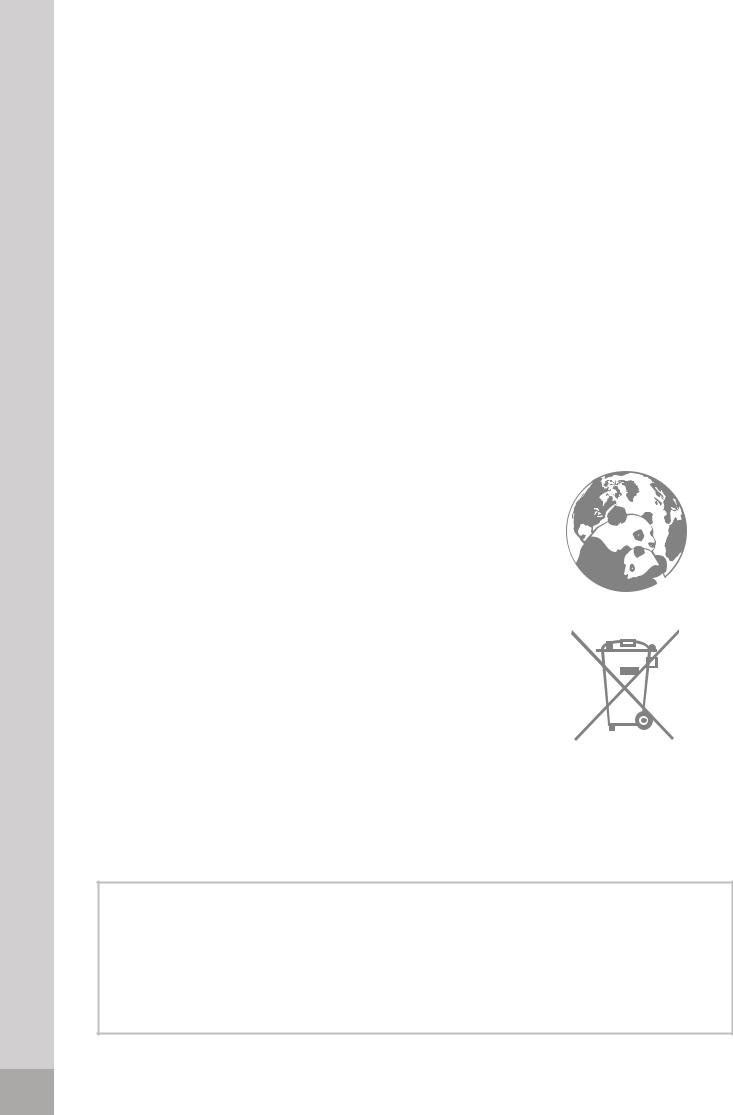
Welcome to the world of
simple handling and no worries
Thank you for choosing Frigidaire. This manual contains all of the information required to guarantee your safety and the appropriate use of your air conditioner.
Please read all of the instructions before using the air conditioner and keep this manual for future reference.
We know you will enjoy your new air conditioner and thank you for choosing our product.
We hope you will consider us for future purchase.
Environmental advices
The packaging material used is recyclable. We recommend that you separate plastic, paper and cardboard and give them to recycling companies.
If you need to dispose of this appliance in the future, do NOT throw it away with the rest of your domestic garbage.
Attention
The air conditioner that you have bought may be slightly different from the one illustrated in this manual. Please refer to the information related to the model you have.
This air conditioner is for domestic use only. It is not reccomended for commercial or industrial use.
01 Welcome

Contents
01. Welcome........................................................................................... |
|
01 |
||||||
02. Environmental advices.......................................................................... |
01 |
|||||||
03. Contents............................................................................................... |
|
02 |
||||||
04. Safety precautions....................................................................... |
04 |
|||||||
05. Installation: |
|
|
||||||
5.1 |
Choosing the installation site....................................................... |
07 |
||||||
5.2 |
Parts list..................................................................................... |
|
09 |
|||||
5.3 |
Indoor unit installation...................................................... |
11 |
||||||
5.4 |
Outdoor unit installation............................................................ |
15 |
||||||
5.5 |
Refrigerant piping connection..................................................... |
17 |
||||||
5.6 |
Electrical |
work...................................................................... |
19 |
|||||
5.7 |
Air Purge................................................................................... |
|
22 |
|||||
5.8 |
Electrical |
safety..................................................................... |
25 |
|||||
5.9 |
Gas leak check........................................................................... |
25 |
||||||
5.10 Test running.............................................................................. |
26 |
|||||||
06. Operation: |
|
|
||||||
6.1 |
Preparing the device for operation............................................ |
27 |
||||||
6.2 |
Product description............................................................. |
28 |
||||||
6.3 |
Remote control......................................................................... |
30 |
||||||
|
- Remote control operation |
|
||||||
|
- Remote control specifications |
|
||||||
|
- Remote control battery |
|
||||||
|
- When should the batteries be replaced |
|
||||||
|
- To replace batteries |
|
||||||
|
- Remote control instructions |
|
||||||
6.4 |
Remote control description......................................................... |
32 |
||||||
|
- On/Off |
|
|
|||||
|
- Mode |
|
|
|||||
|
- + |
|
|
|
||||
|
- |
|
|
|
|
|
|
|
|
|
|
|
|
|
|
|
|
|
- Fan |
|
|
|||||
|
- |
|
|
|
|
|
|
|
|
|
|
|
|
|
|
|
|
|
|
|
|
|
|
|
|
|
|
- TIMER ON |
|
||||||
|
- TIMER OFF |
|
||||||
|
- Clock |
|
|
|||||
|
- Blow |
|
|
|||||
|
- TEMP |
|
|
|||||
|
- Turbo |
|
|
|||||
|
- Sleep |
|
|
|||||
|
- LIGHT |
|
|
|||||
6.5 INTRODUCTION FOR SPECIALFUNCTION................................. |
33 |
|||||||
Contents 02

6.6 |
How the air conditioner works........................................ |
34 |
|
- Automatic operation |
|
|
- Cool/heat and fan only operation |
|
|
- Dry operation |
|
|
- Airflow direction adjustment |
|
|
- Sleep mode |
|
|
- Timer operation |
|
|
- Optimal operation |
|
6.7 |
How to use the indoor unit...................................................... |
38 |
|
- Adjusting air flow direction |
|
|
- Adjusting the vertical air flow direction (up/down) |
|
|
- To set the horizontal air flow direction (left/right) |
|
|
- To automatically swing the air flow direction (up/down) |
|
6.8 |
Manual operation..................................................................... |
40 |
07. Maintenance.................................................................................... |
41 |
|
08. Operation tips...................................................................................... |
43 |
|
09. Solution for problems........................................................................... |
45 |
|
10.Major appliance 5 year parts only limited warranty................................ |
46 |
|
03 Contents

Safety precautions
This appliance must be installed by a qualified licensed HVAC technician in accordance with all applicable codes. All electrical connections should be performed by a licensed electrician.
DANGER! Avoid Serious Injury
or Death
1.Do not attempt to install the split air conditioner by yourself.
2.This air conditioner contains no user-serviceable parts. Always call an authorized Electrolux servicer for repairs.
3.When moving the air conditioner, always call an authorized Electrolux servicer for disconnection and re-installation.
4.Do not insert or place fingers or objects into the air discharge area in the front of the indoor unit.
5.Do not insert or place fingers or objects into the air discharge area in the outdoor unit.
6.Do not start or stop the air conditioner by unplugging the power cord or turning off the power at the electrical box.
7.Do not cut or damage the power cord.
8.If the power cord is damaged it should only be replaced by an authorized Electrolux servicer.
9.In the event of a malfunction (sparks, burning smell, etc.) immediately stop the operation, disconnect the power cord, and call an authorized Electrolux
servicer.
10.Do not operate the air conditioners with wet hands
11.Do not pull on the power cord. 12.Do not drink any water that is drained
from the air conditioners.
CAUTION! Avoid Injury or damage to the unit or other property
1.Provide occasional ventilation during use. Do not direct airflow at fireplaces or other heat related sources as this could cause flare ups or make units run excessively.
2.Do not climb on or place objects on the outdoor unit.
3.Do not hang objects off the indoor unit.
4.Do not place containers containing water on the indoor and/or outdoor units.
5.Turn off the air conditioner at the power source when it will not be used for an extended period of time.
6.Periodically check the condition of the outdoor unit’s installation base for any damage.
7.Do not apply heavy pressure to the radiator fins of the indoor and/or outdoor units.
8.Operate the indoor unit with air filters in place.
9.Do not block or cover the intake grille, discharge area and outlet ports.
10.Ensure that any electrical/electronic equipment is one yard away from the indoor unit and outdoor unit.
11.Do not use or store flammable gases near the indoor and/or outdoor units.
Safety precautions 04
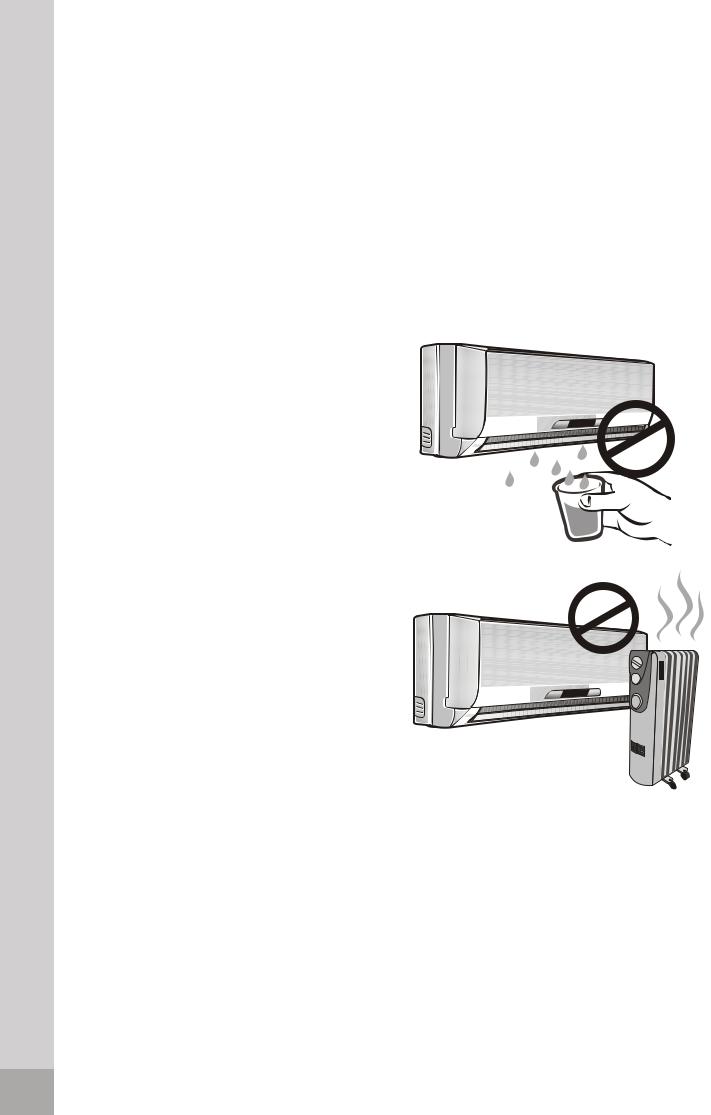
To prevent injury to the user or other people and property damage, the following instructions must be followed.
Incorrect operation due to ignoring of instructions may cause harm or damage. The seriousness is classified by the following indications.
1.Connect with the power properly. Otherwise, it may cause electric shock or fire due to excess heat generation.
2.Always ensure effective grounding. No grounding may cause electric shock.
3.Disconnect the power if strange sounds, smell, or smoke comes from it. It may cause fire and electric shock.
4.Do not operate or stop the unit by switching on or off the power. It may cause electric shock or fire due to heat generation.
5.Do not operate with wet hands or in damp environment. It may cause electric shock.
6.Do not allow water to run into electric parts. It may cause failure of machine, electric shock or fire.
7.Do not use the power cord near flammable gas or combustibles, such as gasoline, benzene, thinner, etc. It may cause an explosion or fire.
8.Do not use the power cord close to heating appliances. It may cause fire and electric shock.
9.Do not damage or use an unspecified power cord. It may cause electric shock or fire.
10.Do not place heavy object on the power cord and ensure that the cord will not be compressed. There is danger of fire or electric shock.
05 Safety precautions
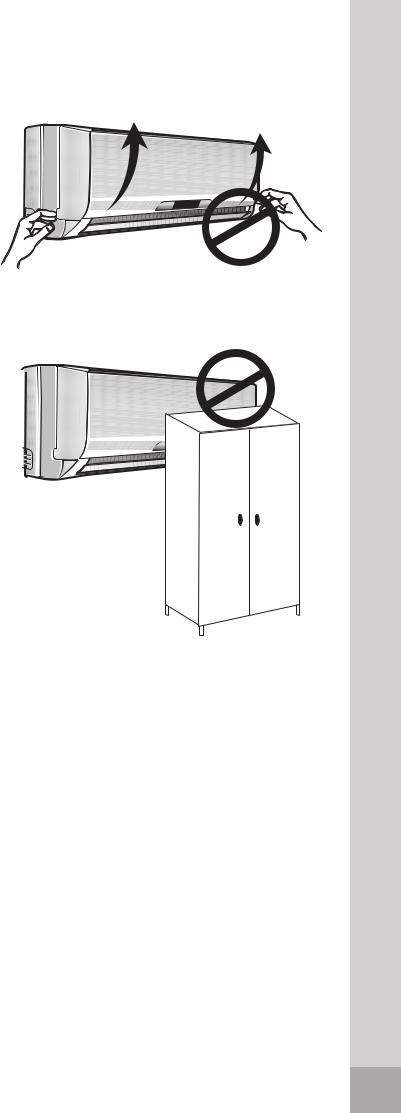
11.Do not open the unit during operation. It may cause electric shock or injury.
12.Do not drink water drained from air conditioner. It contains contaminants and could make you sick.
13.Do not disassemble or modify unit. It may cause failure of appliance and electric shock.
14.When the air filter is to be removed, do not touch the metal parts of the unit. It may cause an injury.
15.When the unit is to be cleaned, switch off, and turn off the circuit breaker. Do not clean unit when power is on as it may cause fire, electric shock or injury.
16.Avoid direct exposure of occupants to air flow.
17.Turn off the main power switch when not using the unit for a long time.
18.The air conditioner may be dusted with an oil free cloth, or washed with a cloth dampened in a solution
of warm water and mild dishwashing detergent. Rinse thoroughly and wipe dry. Wring excess water from cloth before wiping around controls.
19.Ensure that the installation bracket of the outdoor unit will not damage due to prolonged exposure. If bracket damages, there will be concern of damage due to falling
of unit.
20.Always insert the filters securely. Clean filter once every two weeks. Operation without filters may cause failure.
21.Always install circuit breaker and a dedicated power circuit. No installation may cause fire and electric shock.
22.Do not place obstacles around airinlets or inside of air-outlet. It may cause failure of appliance or accident.
Safety precautions 06

Choosing the installation site
Installation Warnings
1.Carefully read the installation manual before beginning.
2.Follow each step as shown.
3.Observe all local, state and national electric codes. This appliance must be installed by a qualified licensed HVAC technician in accordance with all applicable codes. All electrical connections should be performed by a licensed electrician.
4.Pay attention to danger and safety notices
Precautions for Installation
Installation at the following sites may cause problems. If you must inevitably install the unit at one of these sites, please consult your local distributor beforehand:
1.Sites with machine oil.
2.Sites with a high concentration of salinity, such as coastal areas.
3.Sites with sulfuric gas, such as hot water springs.
4.Sites with high frequency equipment, such as wireless equipment, welding machines and medical installations.
5.Sites with flammable gases or volatile material.
6.Sites with special environmental conditions.
7.Laundry rooms.
07 Choosing the installation site

Indoor Unit
1.The unit must be installed at a site that does not obstruct the flow of air.
2.The site must support the weight of the indoor unit.
3.The site must be easily accessible for maintenance and replacement of the air filter.
4.The site must allow for the necessary space around the indoor unit, as shown in the sideward figure.
5.There should be at least 3 feet (1 meter) between the unit and radio or television devices. It is ideal that the unit be installed at the center.
6.It must be far from fire, smoke or flammable gases.
7.We recommend the indoor unit to be installed as high up as possible on the
inside wall, always leaving a space of at least 6" between the top of the indoor unit and the ceiling.
8.The site must allow for the easy removal of the connector pipe and drain hose.
9.The unit must be installed at a site protected from direct sunlight.
More than 6"
More than 6"
More than 6"
Outdoor Unit
1.The outdoor unit must be installed at a convenient site that is not exposed to strong winds. The site should be dry and well ventilated.
2.The site must support the weight of the outdoor unit and allow for vertical installation.
3.There must not be the possibility of increased noise and vibration at the site.
4.The unit must be installed at a site where the noise produced by its operation and air discharge does not disturb the neighbors or animals.
5.The site cannot have any leakage of flammable gases.
More |
More |
More |
than 1.65' |
||
than 1' |
|
than 1' |
06
More  than 6.6' More
than 6.6' More
than 1.65'
6.The site must provide enough space around the unit, as shown in the figure.
7.Children must not be able to access the installation site.
Choosing the installation site 08
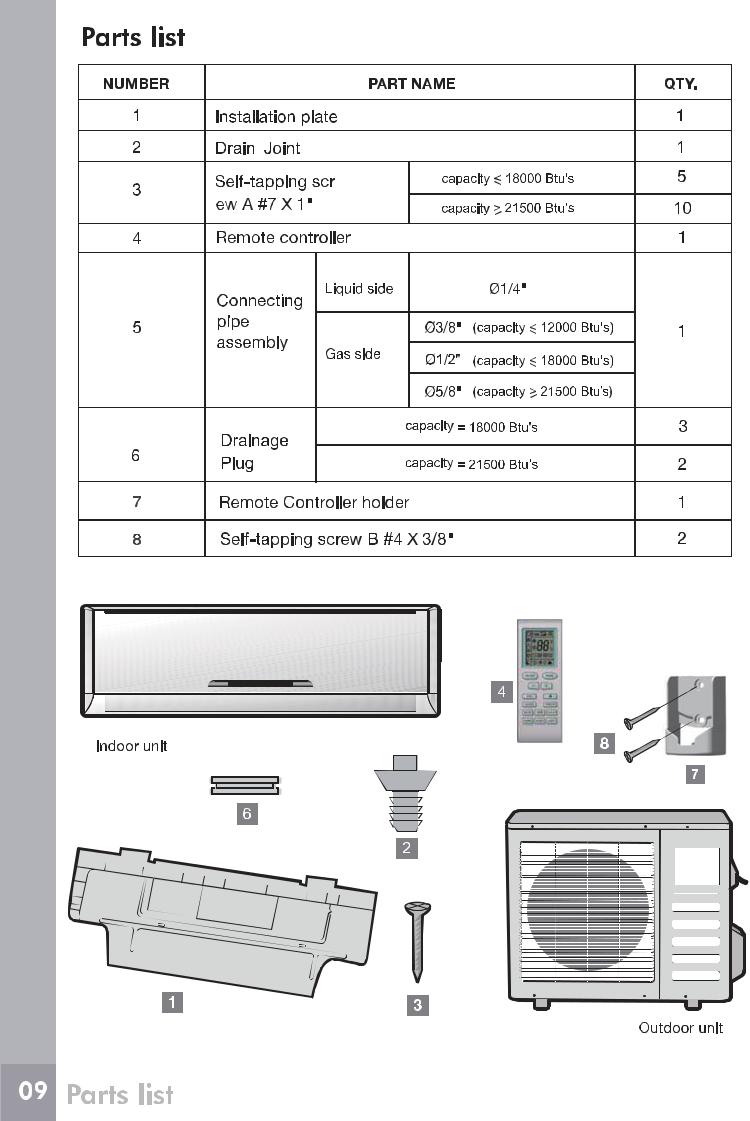
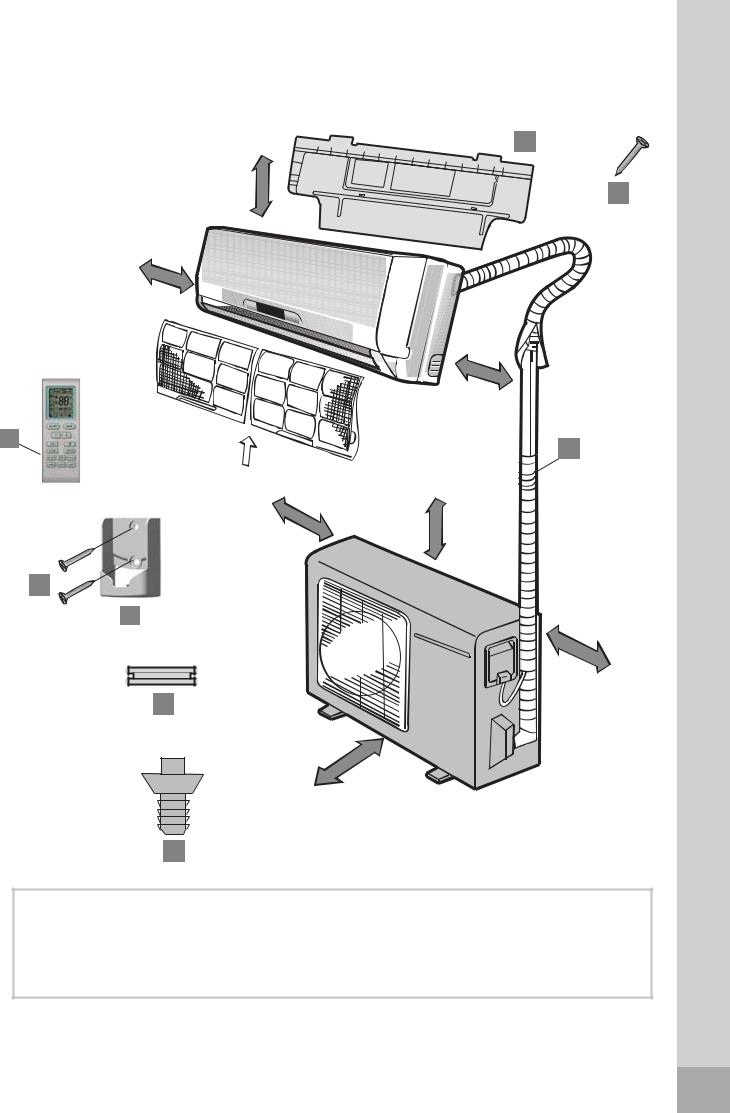
1
More than 6"
3
Indoor unit
More than 6"
6
More than 6"
Air filter
4
5
More than 1.65'
More than 1'
8
7
A
More than 1.65'
6
B |
C |
More than 6.6' |
Outdoor |
|
|
|
unit |
2
Attention
1.This illustration is for explanation purposes only.
2.Copper tubes must be insulated independently
Parts list 10
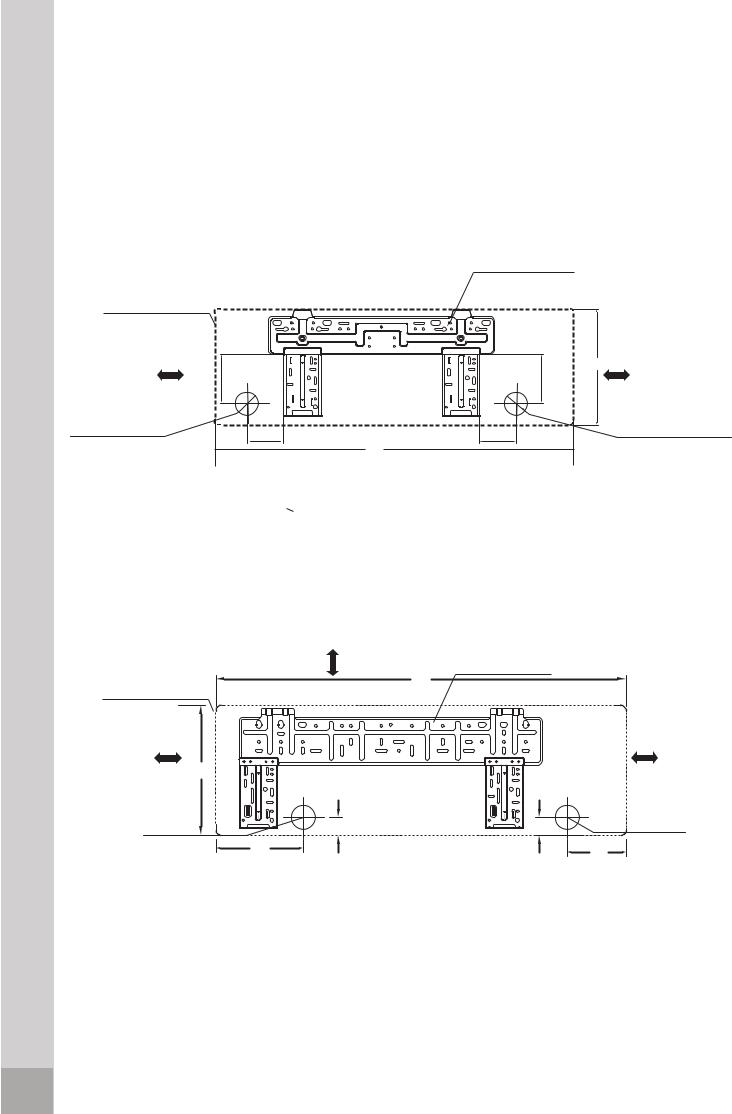
Indoor unit installation
Installation plates and dimensions
6" or more from  the ceiling
the ceiling
Indoor unit outline |
|
6" or more |
|
from the wall |
" |
|
4.21 |
Refrigerant pipe |
|
hole (right) Ø 2.56" |
3.39" |
|
A
Installation plate
|
|
6" or more |
" |
B |
from the wall |
|
||
4.21 |
|
|
|
|
Refrigerant pipe |
3.39" |
|
hole (right) Ø 2.56" |
<12000 Btu's (A:33.31" B:10.83")
6" or more from |
|
the ceiling |
Installation plate |
Indoor unit outline
6" or more from the wall
A
6" or more from the wall
|
B |
|
|
|
Refrigerant pipe |
|
|
Refrigerant pipe |
|
|
|
hole (right) Ø 2.56" |
||
hole (right) Ø 2.56" |
1.58'' |
1.58'' |
||
|
||||
|
7.91'' |
|
5.31'' |
=18000 Btu's (A:36.97" B:11.73")
11 Indoor unit installation
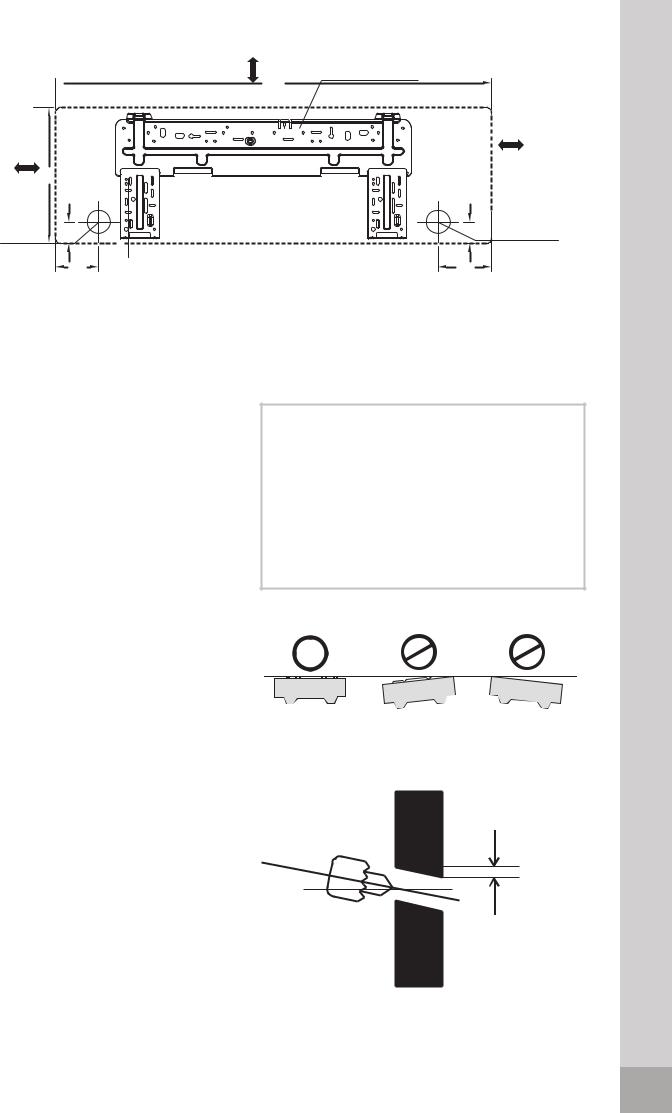
6" or more from the ceiling
|
Installation plate |
|
Indoor unit outline |
A |
|
6" or more |
||
|
||
|
from the wall |
|
6" or more |
|
|
from the wall |
|
|
B |
|
|
1.97'' |
1.97'' |
|
Refrigerant pipe |
Refrigerant pipe |
|
hole (right) Ø 2.56" |
||
hole (right) Ø 2.56" |
||
|
||
3.94'' |
4.88'' |
=21500 Btu's (A:39.69" B:12.40")
Fixing the Installation Plate
1.Install the installation plate horizontally over the structural parts on the wall using the spaces indicated on the plate, as shown in the figures above.
2.In the case of tiled, concrete or similar walls, create 0.2" diameter holes. Place anchorage supports for the appropriate assembly screws.
3.Fix the installation plate to the wall with eight A type screws.
4.At all times securing to the wall studs is recommended.
Drilling the Hole
1.Determine the position of the hole for the pipes using the installation plate and drill the pipe hole so that it is tilted slightly downward.
2.Always use a pipe cover with an opening when drilling.
Attention
Fit the Installation Plate and drill holes in the wall according to the wall structure and corresponding mounting points on the installation plate (Dimensions are in “mm” unless otherwise stated).
Installation plate
Wall
Indoor unit |
Outdoor unit |
0.2"-0.28"
Indoor unit installation 12
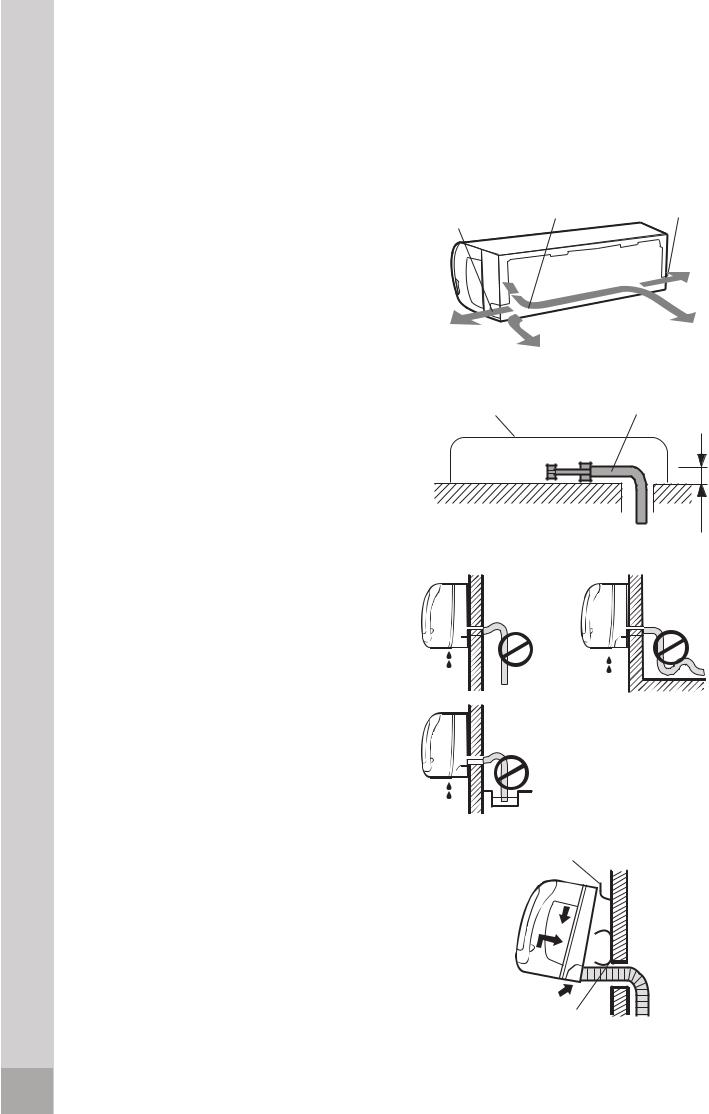
Connective pipe and drainage installation
Connective pipe
1.For the left-hand and right-hand piping, remove the pipe cover from the side panel. The pipe cover must be kept as it may be used when relocating the air conditioner to any other place.
2.For the rear-right-hand and rear-left- hand piping, install the piping as shown in the sideward figure. Bend the connective pipe to be laid at
a height of 1.69" or less from the wall. Fix the end of the connective pipe.
Pipe cover (right)
Right piping
Indoor unit outline
Pipe |
Pipe cover |
holder |
(left) |
|
Left piping |
Rear right |
Rear left |
piping |
piping |
Connective |
|
pipe |
|
|
1.69" |
Drainage
1.Run the drain hose sloping downward. Do not install the drain hose as illustrated sideward.
2.When connecting extension drain hose, insulate the connecting part of extension drain hose with a shield pipe, do not let the drain hose slack.
Fastening the Indoor Unit
1.Pass the piping through the hole in the wall.
2.Put the upper claw at the back of the indoor unit on the upper hook of the installation plate, move the indoor unit from side to side to see that it is securely hooked.
|
Do not block |
|
Do not block |
|
water flow |
|
water flow |
|
by a rise. |
|
by a rise. |
|
|
|
|
|
|
|
|
Do not put the end
of drain hose into water.
Upper hook
Lower hook
13 Indoor unit installation

3.Piping can easily be made by lifting the indoor unit with a cushioning material between the indoor unit and the wall. Get it out after finish piping.
4.Push the lower part of the indoor unit up on the wall, Then move the indoor unit from side to side, up and down to check if it is hooked securely.
Piping and wrapping
1.Bundle the tubing, connecting cable, and drain hose with tape securely and evenly as shown in the sideward figure.
2.Because the condensed water from rear of the indoor unit is gathered in ponding box and is piped out of room, do not put anything else in the box.
Cushioning material
Indoor unit
Cable connection
Drain hose
Ponding box
Pipe room
Connective pipe
Wrapping belt
Attention
1.Connect the indoor unit first, then the outdoor unit.
2.Do not allow the piping to let out from the back of the indoor unit.
3.Be careful not to let the drain hose slack.
4. Both of the auxiliary piping should be heat insulation.
5. Be sure that the drain hose is located at the lowest side of the bundle. Locating at the upper side may cause drain pan to overflow inside the unit.
6. Never intercross nor intertwist the power wire with any other wiring.
7. Run the drain hose sloped downward to drain out the condensed water smoothly.
Indoor unit installation 14
